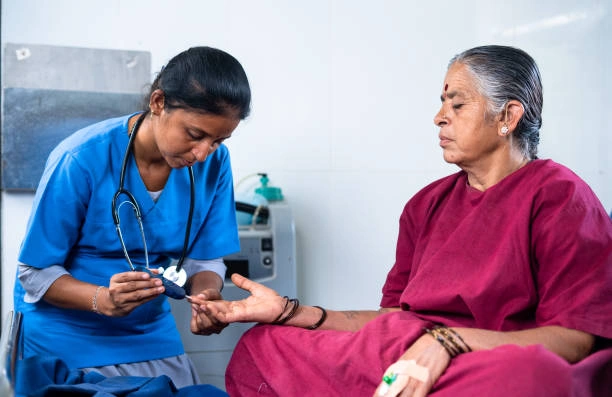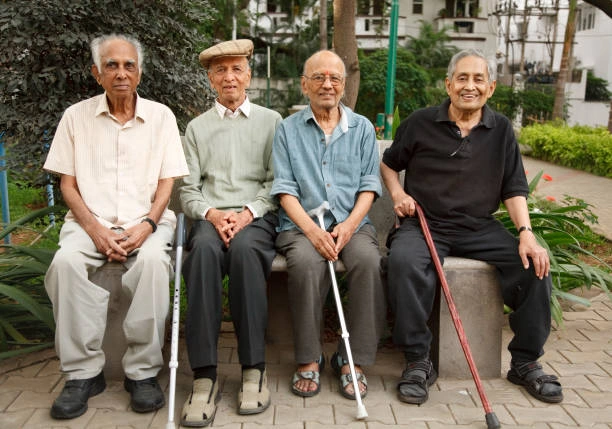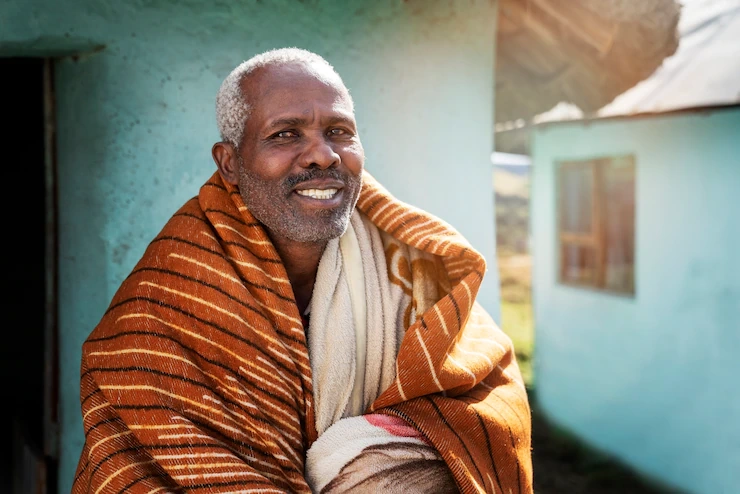Support healthy ageing with gentle home exercises for seniors. Explore expert guidance from a truste


Support healthy ageing with gentle home exercises for seniors. Explore expert guidance from a truste

Preventing Antibiotic Misuse in UTI Treatment for Elderly: A Guide to Responsible Antibiotic Use

The Top 10 Digital Literacy Skills Every Senior Should Know

Cancer is a challenging disease that affects people of all ages, but it can be particularly difficult for seniors. Chemotherapy is a common treatment for cancer, but it can have severe side effects that make it challenging for seniors to manage on their own. Registered nurses and medical assistants play a crucial role in managing chemotherapy for seniors with cancer, providing support and care to help them through this challenging time.
Registered nurses and medical assistants are specifically trained to manage chemotherapy for seniors with cancer. They work closely with doctors and other healthcare professionals to develop personalized treatment plans that take into account each senior's unique needs and medical history. These plans may include specific medications, dosages, and scheduling, as well as strategies for managing side effects and monitoring progress.
One of the primary responsibilities of registered nurses and medical assistants is to monitor seniors' vital signs and symptoms during chemotherapy treatments. They are trained to recognize signs of adverse reactions, such as fever, chills, nausea, and vomiting, and can quickly respond to these symptoms to prevent further complications. They can also administer medications to manage these symptoms and help seniors feel more comfortable during their treatments. Watch this amazing video from our experts on complementary approaches to cancer.
In addition to monitoring vital signs and symptoms, registered nurses and medical assistants also provide emotional support and education for seniors and their families. They can explain the benefits and risks of chemotherapy, answer questions about treatment, and provide tips for managing side effects. They can also provide guidance on nutrition and lifestyle changes that can help seniors feel better and stay healthy throughout their treatment.
Registered nurses and medical assistants can also help seniors with chemotherapy-related tasks, such as managing feeding tubes, administering intravenous (IV) medications, and changing dressings. They can also help seniors with mobility issues, such as getting in and out of bed, walking, and transferring to and from wheelchairs.
Overall, the role of trained personnel in managing chemotherapy for seniors with cancer is essential. They provide critical support and care that can help seniors manage their treatments and improve their quality of life. With the help of trained personnel, seniors with cancer can focus on their recovery and well-being, knowing that they have a team of dedicated professionals on their side. Healthywrinkles has a lot of expert content and listings of various senior care professionals.

What are the guidelines for establishing Old Age Homes?

As the elderly population in India continues to grow, the need for safe and regulated old age homes becomes increasingly important. The Indian government has recognized this need and has established regulatory requirements for old age homes to ensure the safety and well-being of residents.
Searching for old age homes near me?
We at healthywrinkles have a handpicked list of 100’s old age home options.
One of the key regulatory requirements for old age homes in India is the Maintenance and Welfare of Parents and Senior Citizens Act, 2007. This act establishes certain duties of children and heirs to care for their aging parents and provides legal recourse for senior citizens who are mistreated or neglected by their children.
In addition to the Maintenance and Welfare of Parents and Senior Citizens Act, old age homes in India are subject to regulations and guidelines set forth by the National Policy on Older Persons, 1999. This policy provides guidelines for the establishment and management of old-age homes, including the provision of basic amenities such as food, shelter, medical care, and recreational facilities. The policy also recommends that old age homes be established in a peaceful and serene environment and that they be easily accessible to family members and the community. Check out this list of old age homes Bangalore.
Another essential regulatory requirement for old age homes in India is the Medical Care and Welfare of Senior Citizens Bill, 2014. This bill seeks to provide a legal framework for the medical care and welfare of senior citizens and includes provisions for the establishment of geriatric hospitals, the training of healthcare professionals in senior care, and the provision of home-based healthcare services.
Old age homes in India are also subject to the guidelines and regulations set forth by the National Institute of Social Defense, which is responsible for the training and capacity building of organizations working in the field of social defense, including old-age homes. These guidelines provide comprehensive guidance on the management of old age homes, including the recruitment and training of staff, the provision of medical care and social services, and others.
In conclusion, regulatory requirements for old age homes in India are aimed at ensuring the safety, welfare, and well-being of senior citizens. These requirements include the Maintenance and Welfare of Parents and Senior Citizenship Act, the National Policy on Older Persons, the Medical Care and Welfare of Senior Citizens Bill, and the guidelines set forth by the National Institute of Social Defence. By adhering to these regulations and guidelines, old age homes in India can provide a safe and comfortable environment for senior citizens to age with dignity and respect.

As the elderly population in India continues to grow, the need for safe and regulated old age homes becomes increasingly important. The Indian government has recognized this need and has established regulatory requirements for old age homes to ensure the safety and well-being of residents.
Searching for old age homes near me?
We at healthywrinkles have a handpicked list of 100’s old age home options.
One of the key regulatory requirements for old age homes in India is the Maintenance and Welfare of Parents and Senior Citizens Act, 2007. This act establishes certain duties of children and heirs to care for their aging parents and provides legal recourse for senior citizens who are mistreated or neglected by their children.
In addition to the Maintenance and Welfare of Parents and Senior Citizens Act, old age homes in India are subject to regulations and guidelines set forth by the National Policy on Older Persons, 1999. This policy provides guidelines for the establishment and management of old-age homes, including the provision of basic amenities such as food, shelter, medical care, and recreational facilities. The policy also recommends that old age homes be established in a peaceful and serene environment and that they be easily accessible to family members and the community. Check out this list of old age homes Bangalore.
Another essential regulatory requirement for old age homes in India is the Medical Care and Welfare of Senior Citizens Bill, 2014. This bill seeks to provide a legal framework for the medical care and welfare of senior citizens and includes provisions for the establishment of geriatric hospitals, the training of healthcare professionals in senior care, and the provision of home-based healthcare services.
Old age homes in India are also subject to the guidelines and regulations set forth by the National Institute of Social Defense, which is responsible for the training and capacity building of organizations working in the field of social defense, including old-age homes. These guidelines provide comprehensive guidance on the management of old age homes, including the recruitment and training of staff, the provision of medical care and social services, and others.
In conclusion, regulatory requirements for old age homes in India are aimed at ensuring the safety, welfare, and well-being of senior citizens. These requirements include the Maintenance and Welfare of Parents and Senior Citizenship Act, the National Policy on Older Persons, the Medical Care and Welfare of Senior Citizens Bill, and the guidelines set forth by the National Institute of Social Defence. By adhering to these regulations and guidelines, old age homes in India can provide a safe and comfortable environment for senior citizens to age with dignity and respect.


Cervical cancer in older women: Does age matter

Strategies to get ready for more old-than-young society

How a sudden weather change can effect your body

World Health Day 2023 is a day to focus on the theme of "Health for All." The World Health Organization (WHO) has chosen this theme to emphasize the importance of universal health coverage and ensuring that everyone has access to quality healthcare services.
The COVID-19 pandemic has highlighted the existing gaps and inequalities in healthcare systems around the world. Many people, especially those living in low-income and developing countries, do not have access to the healthcare they need. The theme of "Health for All" aims to address these disparities and ensure that everyone has access to the healthcare services they need to live healthy and productive lives.
To achieve the goal of "Health for All," there are several steps that individuals and organizations can take. First, we must advocate for policies that promote universal health coverage. This could include policies that increase funding for healthcare systems, improve access to essential medicines, and expand healthcare services to rural and remote areas.
Second, we must focus on improving the quality of healthcare services. This could involve training healthcare providers, improving medical facilities, and investing in research and development of new treatments and technologies.
Third, we must prioritize preventative healthcare services to promote healthy lifestyles and prevent the onset of diseases. This could involve promoting healthy eating habits, encouraging physical activity, and providing vaccinations and screenings.
Finally, we must address the social determinants of health, such as poverty, education, and access to clean water and sanitation. These factors play a significant role in determining an individual's health outcomes and must be addressed to achieve the goal of "Health for All."
On World Health Day 2023, individuals and organizations around the world can take action to promote "Health for All." This could involve organizing health fairs, providing health education and resources, and partnering with local healthcare providers to offer free or low-cost healthcare services.
It could also involve advocating for policies that promote universal health coverage and prioritizing preventative healthcare services. By working together to promote "Health for All," we can ensure that everyone, regardless of their background or circumstances, has access to the healthcare services they need to live healthy and productive lives.
In conclusion, the theme of "Health for All" on World Health Day 2023 emphasizes the importance of universal health coverage and ensuring that everyone has access to quality healthcare services. To achieve this goal, we must advocate for policies that promote universal health coverage, improve the quality of healthcare services, prioritize preventative healthcare services, and address the social determinants of health. By working together, we can promote "Health for All" and ensure that everyone has access to the healthcare services they need to live healthy and productive lives.